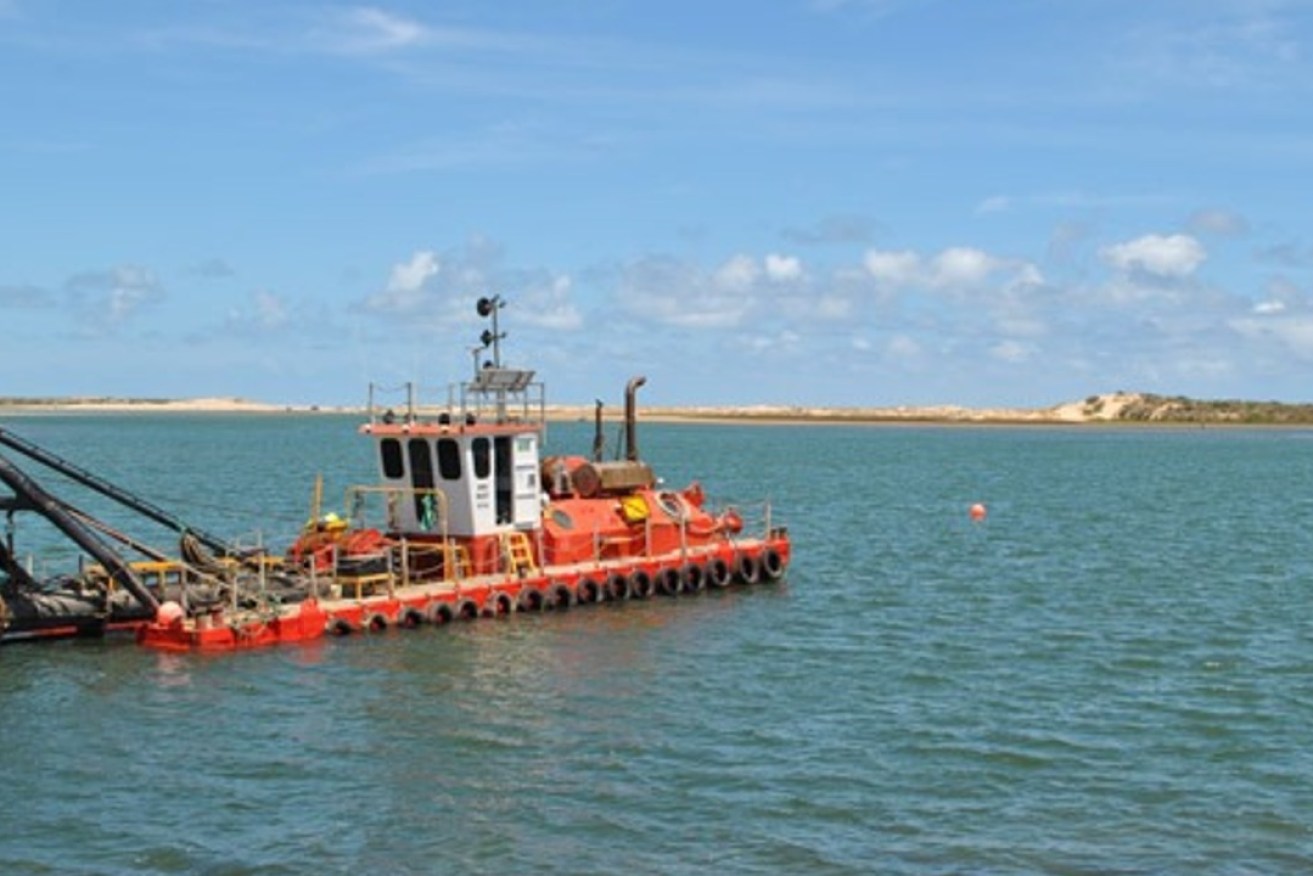Finally, water reforms that benefit South Australia
After a decade of delay, the Murray Darling Basin Plan finally looks to be back on track, writes Craig Wilkins.

Dredging has resumed at the River Murray mouth. Photo: Landscape South Australia-Murraylands and Riverland
Just in the nick of time, Tanya Plibersek has clinched a rescue package for the Murray-Darling. These water reforms can’t proceed quick enough to bring our nation’s biggest river system back from the brink.
In striking a deal to pass the Restoring Our Rivers Bill 2023 last week, the Albanese government, Greens and key Independent crossbenchers have thrown Australia’s inland rivers, wetlands and wildlife a lifeline ahead of a looming drought.
As the state at the end of Australia’s greatest river system, South Australia is set to be a big winner from the passing of the bill.
For the last decade, it’s been incredibly frustrating being forced to justify and defend the inclusion of the 450 gigalitre component of the Murray-Darling Basin Plan. From the start scientists said the full delivery of the plan – including the 450 gigalitres – was the absolute bare minimum required to give the Murray a decent chance of survival. Its inclusion was the clincher for South Australia joining in the plan, despite fierce resistance from people upstream.
Even now, dredging of the river mouth at the Coorong is back on the table. This is a clear sign more water is needed to ensure the basic health of the river. We don’t have a moment to lose with dry summers ahead.
Dodgy deals and delays saw the Murray-Darling Basin Plan grind to a halt this past decade
This bill now has the support of federal politicians of different political stripes and every state and territory government in the basin, except for Victoria.
The Victorian government, backed by vested industry interests and a well-organised irrigation lobby, continues to peddle the myth that buybacks – allowing farmers to voluntarily sell their water to the Commonwealth – will harm regional economies.
In fact, according to recent Australia Institute polling, 63 per cent of people in regional communities across Australia support voluntary buybacks, because they know they are the best way to restore water to our rivers.
How did we come to be in this position?
Dodgy deals and delays saw the Murray-Darling Basin Plan grind to a halt this past decade, and our rivers paid the price. The bill that Tanya Plibersek has negotiated puts us back on the right track.
This legislation allows the government to start buying water from willing irrigators again, a vital solution for restoring the river system to health. It’s the best sign of progress we’ve seen in years.
After concerted pressure from communities who travelled from every corner of the Murray-Darling to Canberra to make their voices heard, the government improved its original legislation in significant ways – meaning it is now fit to the task.
These amendments include a new opportunity to improve flows in the Darling-Baaka to prevent more mass fish kills at Menindee, cancelling dodgy water offset projects and an independent audit of water recovery so far.
The legislation also creates a pathway for First Nations to have a much greater say over how their waterways are managed, an important acknowledgement of the crucial role they have always played in caring for country. There’s more money for Aboriginal water entitlements, and a recognition of First Nations at the very heart of the Water Act, although the wording falls far short of what First Nations advocates say is needed to deliver true water justice.
These are crucial changes that put us on the right track to a healthy environment and, after a decade of delay or inaction, restore hope that we can restore our rivers.
Last week’s deal is just the beginning. It protects the river from impending drought, but with climate change likely to reduce future rainfall, in time we’ll need a bigger, bolder plan to ensure the long-term health of the Murray-Darling.
Fortunately, the plan must be reviewed in 2026 and today’s deal gives hope the review will be a meaningful exercise and not merely a rubber stamp. But for today, South Australians should be rejoicing that after a decade of delay, the Murray Darling Basin Plan finally looks to be back on track.
Craig Wilkins is Conservation Council of South Australia Chief Executive




